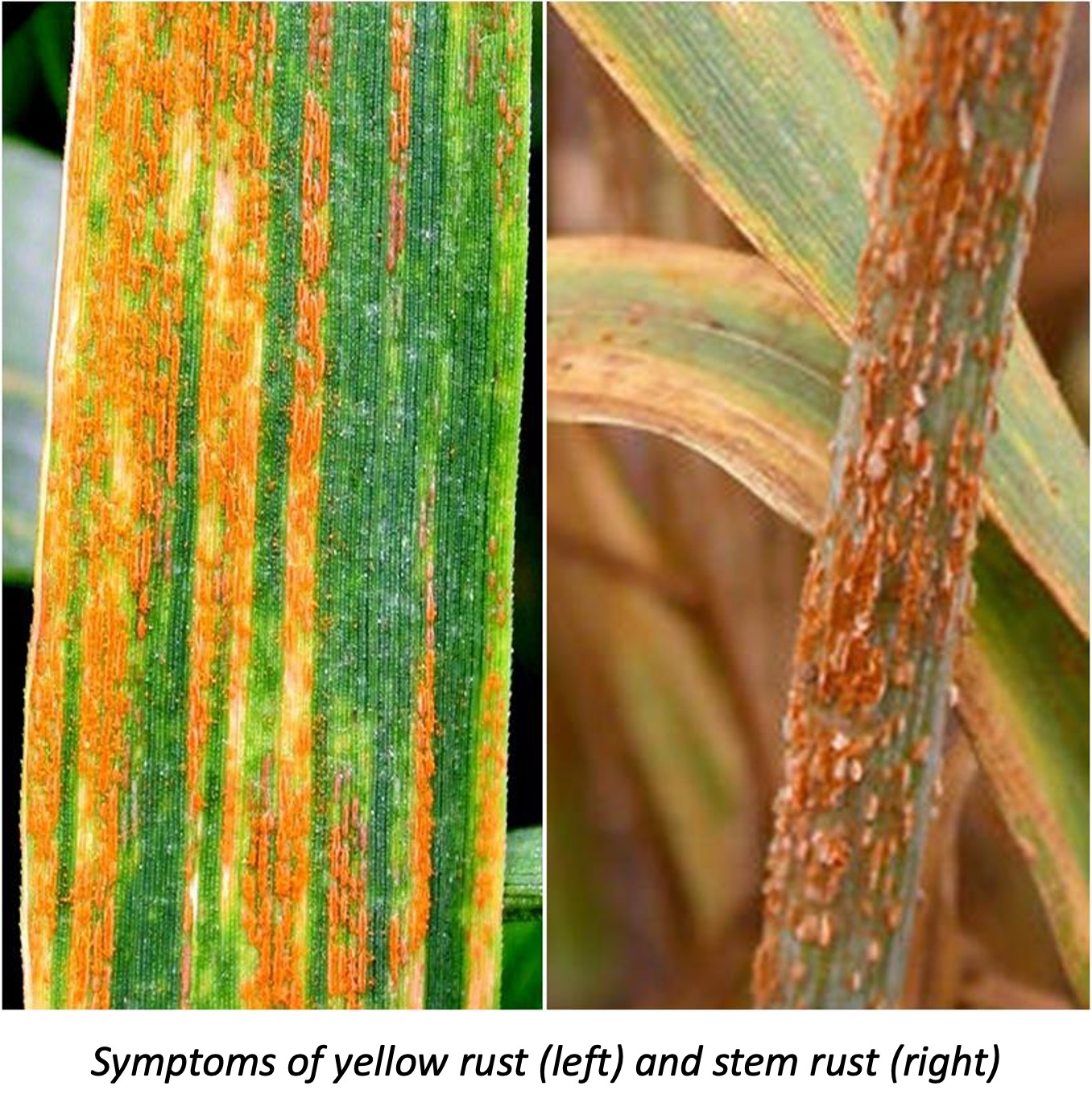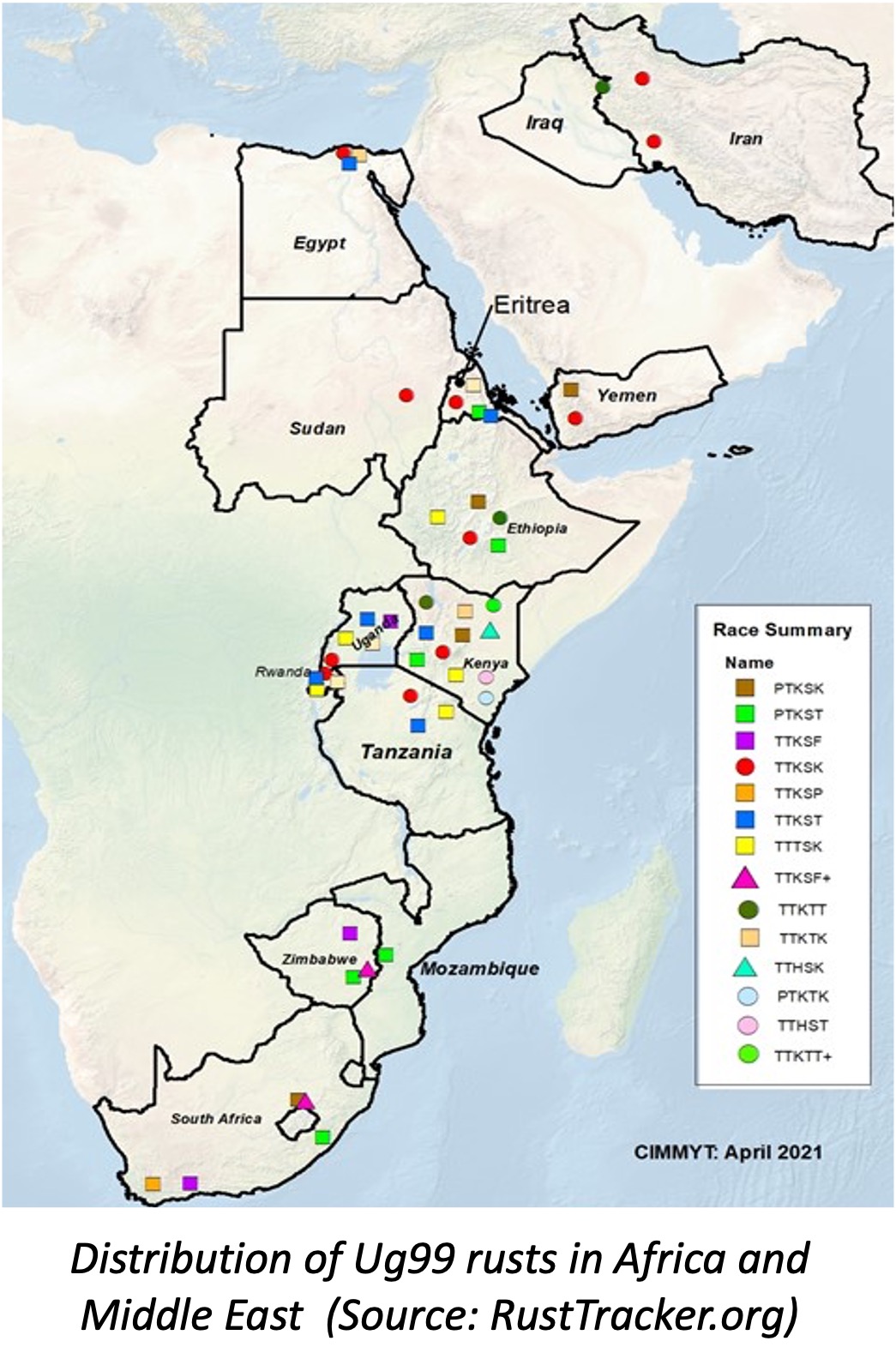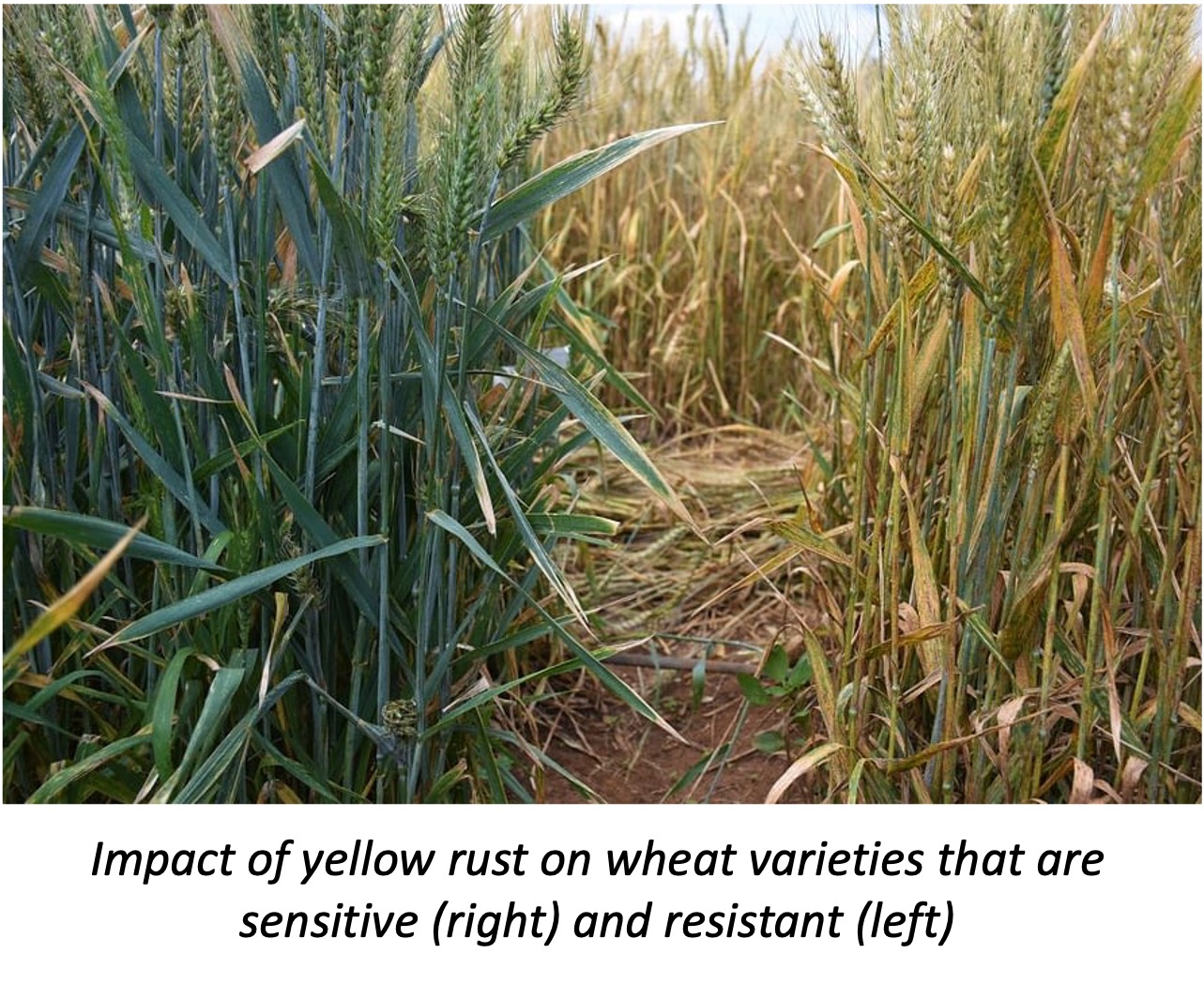Yellow Rust and Stem Rust Resistant wheat
Summary
Yellow rust and stem rust are destructive diseases in major wheat production zones of Sub-Saharan Africa. Infections by these fungal pathogens lead to yield losses of 50-90% and may destroy entire wheat crops within only a few weeks. Rust diseases quickly spread as their spores are carried by wind, resulting in massive losses as occurred with the highly virulent African strain of stem rust Ug99. There is a rapid emergence of new strains over time. Rusts can infect native grasses that make it difficult to eradicate from agricultural landscapes. Use of wheat varieties that are resistant to yellow and stem rust prevents disease outbreak and enhances yields across breadbasket areas. ICARDA, together with national partners have established expansive networks for developing and multiplying rust resistant lines in major wheat production zones that allow proactive and cost-effective disease control.
About the Solution
Resistance to yellow rust and stem rust in wheat is expressed from the seedling through adult stages of the growing cycle. Seedling resistance often originates from a single gene but may be restricted to just one strain of the pathogen. Adult plant resistance arises from multiple genes and usually offers protection against multiple rust strains. These resistance mechanisms are then combined resulting in disease resistant varieties. Breeding for rust resistance in wheat is performed through conventional methods by crossing lines into new cultivars and screening their performance under field conditions. A shuttle breeding approach is employed by international centers for developing rust resistant wheat with varieties across Mexico, Kenya, Morocco and Lebanon, allowing selection for multiple desired resistance traits. National testing, release and accelerated seed multiplication ensures that these varieties reach farmers quickly. Generally, resistance to rust by wheat is effective for five years after which new varieties are required to counter new variants of the diseases.
Yellow rust and stem rust diseases have spread in all major wheat growing zones of Eastern and Southern Africa. Cooler temperatures (<15°C), heavy dew and intermittent rain are creating the ideal conditions for rusts to infect and damage wheat crops which occur in the night-time across highlands and during the winter season of sub-tropical regions. Different variants of yellow rust and stem rust species occur in specific areas of Sub-Saharan Africa owing to climatic conditions, such as is the case for Ug99 (TTKSK) which has been detected in Kenya, Ethiopia, Sudan, Eritrea, Mozambique, Zimbabwe, Tanzania and South Africa. Resistance of wheat varieties is developed for particular sets of rust species making that their use is geographically restricted and has to be aligned with disease occurrence. Adaptations of improved wheat lines to environmental factors like rainfall and growing degree-days further delimit the suitability of their deployment.
There are rust resistant wheat varieties that withstand one specific strain of a rust species and others that are immune to a collection of strains, species and types. More than 80 rust disease resistance genes are known and selected ones are expressed in resistant wheat varieties that are available to farmers in Sub-Saharan Africa. In Ethiopia a total of 22 durum wheat varieties were released that withstand yellow and stem rust, e.g. Kababa, Shorima, Ogolcho, Wane, Hidasie and Kubsa. A number of wheat varieties that are resistant to Ug99 stem rust have been developed and introduced across East-Africa over the past couple of years as a response to the devastating outbreak. The available wheat varieties that withstand rust diseases are characterized by a medium to high yield potential, and have good to fairly good baking quality.
Normally, seed multiplication of rust resistant wheat is done after the varieties underwent verification and adaptation trials which takes about one year for farmers to access the new technology. In case of severe outbreaks, it is possible to perform accelerated seed multiplication alongside with field testing of new varieties, this both during main- and off-seasons, allowing farmers to get hold of resistant germplasm in less than a year time from its release. Seed multiplication of rust resistant wheat involves 2-4 stages, and follows the same procedures as for other cultivars. In a first step, early-generation or basic seed is produced by agricultural research centers, and in a second step this is passed on to private farms, farmer cooperative unions, farmer seed producer associations and model farmers for multiplying large volumes of certified seed. Stocks of rust resistant planting material can be maintained by farmers through different in-field techniques, such as the ear-to-row method where best-performing ears are selected and replanted in single lines. Wheat varieties that are resistant to yellow rust and stem rust are grown with the same planting density and mineral fertilizer input as other improved cultivars, following local recommendations. Fungicide spraying may also be needed for resistant wheat varieties to protect the crop.
Commercialization
Commercially available
Solution Images
Institutions




